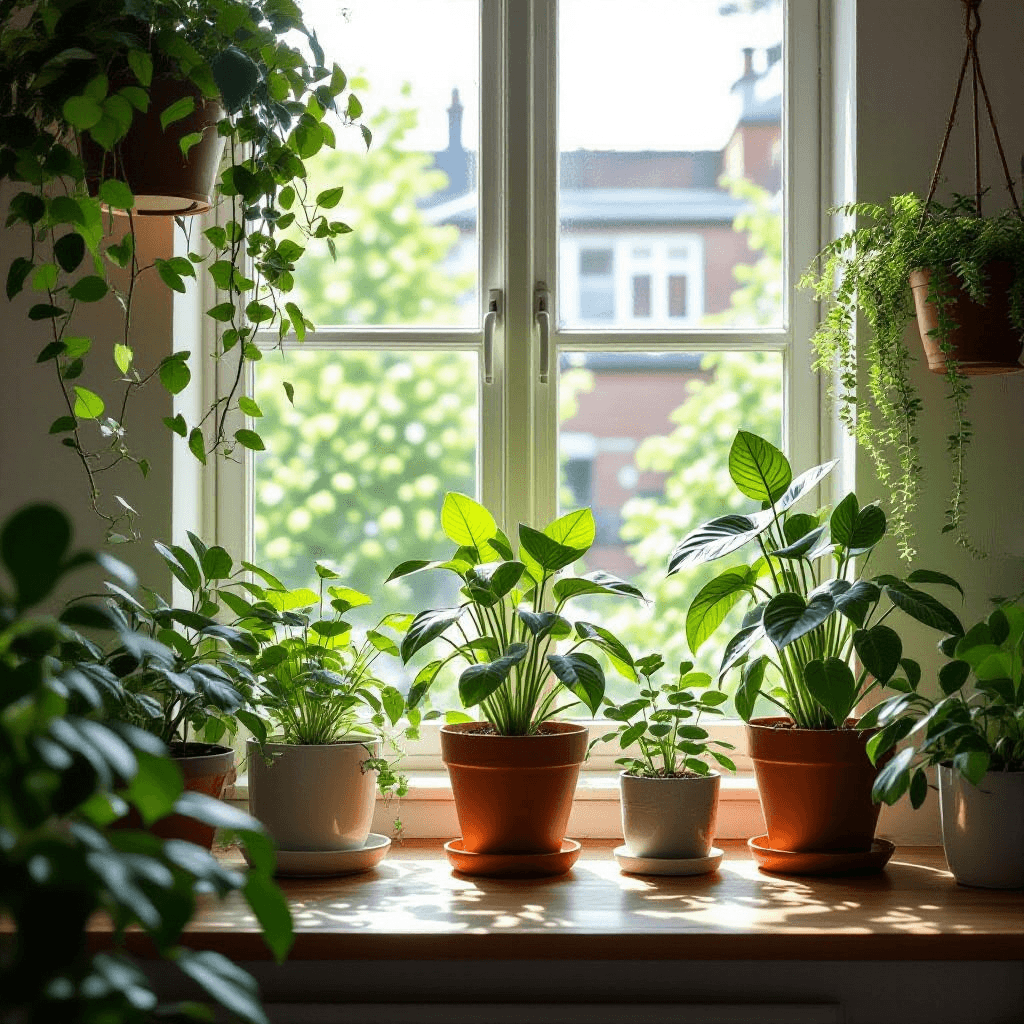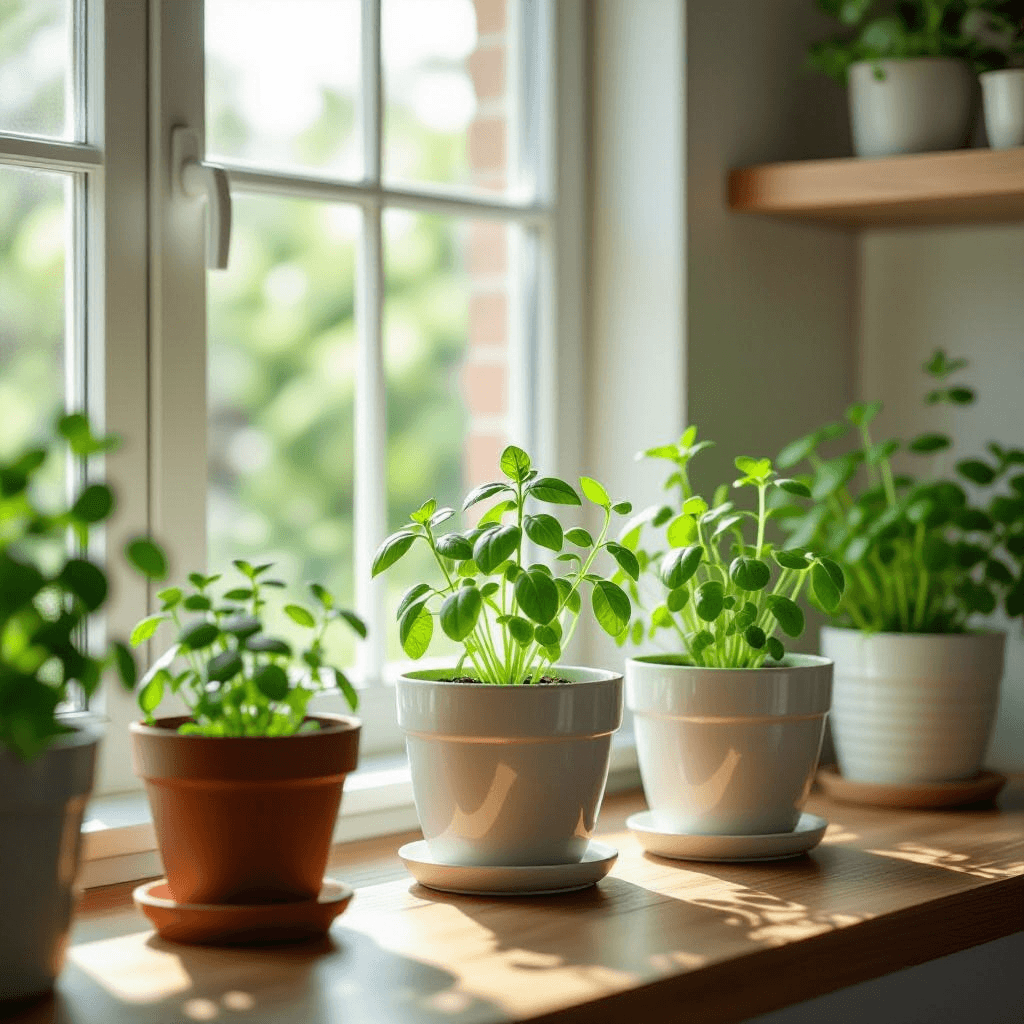Understanding Low-Light Conditions
Indoor gardening presents unique challenges, particularly when dealing with low-light conditions. These conditions are generally characterized by insufficient natural light from windows, often due to factors such as the orientation of the home, heavy landscaping, or simply smaller window sizes. Understanding the impacts of such conditions is crucial for successful plant growth.
Most plants have specific light requirements categorized as low, medium, or high light. Low-light plants are typically adapted to thrive in environments receiving less than 100 foot-candles of light, which is equivalent to the illumination provided by a north-facing window. In contrast, medium-light plants thrive in 100 to 200 foot-candles, while high-light varieties require 200 foot-candles or more. The importance of these distinctions cannot be overstated, as the right lighting is essential for photosynthesis, affecting growth, flowering, and overall health.
When considering indoor light sources, one must differentiate between natural and artificial lighting. Natural light varies throughout the day and the seasons, and its availability greatly influences plant growth. Conversely, artificial light can help compensate for lack of natural illumination. Grow lights, typically consisting of fluorescent, LED, or incandescent bulbs, offer options for delivering adequate light spectrum necessary for plant development. However, the selection of the appropriate type and intensity of artificial light is critical, as not all plants respond well to every type of light source.
Low-light gardening does present specific challenges, including slow growth rates and potential pest issues, as many indoor environments can lead to stagnant air. Additionally, high humidity or lack of air circulation can exacerbate these problems, creating a potential for mold or mildew. Therefore, it is vital for indoor gardeners to be aware of these conditions and adapt their care techniques accordingly while choosing the right plants that are well-suited for low-light environments.
Choosing the Right Plants for Low-Light Environments
When creating an indoor garden in areas with limited light, selecting the appropriate plants is essential for success. Certain species exhibit remarkable adaptability and thrive under low-light conditions, making them ideal choices for indoor gardening. One of the most popular options is the snake plant (Sansevieria trifasciata), renowned for its distinctive upright leaves and tolerance to neglect. This hardy plant can survive in low-light spaces and does not require frequent watering, which makes it perfect for beginners.
Another excellent choice is pothos (Epipremnum aureum), a versatile vine that can grow in a variety of lighting conditions, including low light. Pothos features heart-shaped leaves that come in various shades of green, with some varieties showcasing beautiful variegation. This plant is not only visually appealing but also helps purify indoor air, making it a functional addition to any indoor garden.
Peace lilies (Spathiphyllum spp.) are also well-suited for low-light environments. With their striking white blooms and deep green foliage, they can brighten up any room. Peace lilies prefer indirect light and moderate watering, which makes them relatively low maintenance. Additionally, they can thrive in diverse humidity levels, adding versatility to your plant selection.
It is essential to understand each plant’s specific light requirements and general care needs for fostering a thriving indoor garden. By choosing plants like snake plants, pothos, and peace lilies, you can ensure that your low-light gardening efforts are successful. Maintaining an awareness of how adaptable these plant species are to varying conditions will further enhance your gardening experience and enable you to cultivate a lush, indoor environment even with limited sunlight.
Maximizing Available Light for Your Indoor Garden
Indoor gardening can be a rewarding endeavor, even in spaces with limited natural light. To effectively nurture plants in such conditions, it is crucial to adopt strategies that maximize the available light. One of the simplest yet effective methods is the use of mirrors or reflective surfaces. By placing mirrors strategically in your indoor gardening space, you can enhance the amount of light that reaches your plants. These reflective surfaces can direct sunlight from windows to the areas where your plants are located, thus increasing their exposure to the much-needed light.
Additionally, the placement of plants is vital. Positioning them near windows, especially those that receive indirect sunlight, allows them to benefit from whatever natural light is available. If this option is limited, another solution is to use artificial lighting. Grow lights come in various types, including fluorescent, LED, and incandescent options, each tailored to different plant needs. For indoor gardens with low-light conditions, LED grow lights are particularly popular due to their energy efficiency and full-spectrum capabilities. These lights provide the necessary wavelengths for photosynthesis and can be adjusted in height and intensity to suit the specific requirements of your plants.
Moreover, rotating your plants occasionally is an essential practice to promote even light distribution across their foliage. This simple technique prevents one side from developing leggy growth while the opposite side may remain underexposed. By ensuring that all parts of the plant receive adequate light, you can encourage balanced growth and overall plant health. The combination of strategic placement, effective use of reflective surfaces, and the implementation of grow lights can significantly enhance your indoor gardening experience in low-light environments.
Care Tips for Low-Light Indoor Gardening
Indoor gardening in low-light conditions presents unique challenges, requiring specific care practices to ensure plant health and growth. One of the most critical factors to consider is the watering routine. In low-light environments, plants typically absorb less water since they are not photosynthesizing as vigorously as those in brighter settings. Therefore, it is essential to adopt a more measured watering schedule. Checking the top inch of soil for dryness can serve as a useful indicator; if it feels dry, it may be time to water. Overwatering can lead to root rot, which is more prevalent in dim settings, so ensure pots have adequate drainage.
Humidity levels also play a pivotal role in indoor gardening. Plants in low-light conditions often benefit from increased humidity as it aids their ability to transpire effectively. Utilizing a humidifier or placing trays of water near your plants can help maintain this moisture balance. Additionally, making a habit of misting the leaves can create a favorable environment for these low-light dwellers. It is crucial to monitor humidity levels closely, especially during winter months when indoor heating can significantly decrease moisture in the air.
Fertilization is another important consideration. While plants in bright light often require more frequent feeding, those in low light typically thrive on a reduced fertilization schedule. A diluted, balanced fertilizer applied every 4-6 weeks can support growth without overwhelming the plants. Pay attention to the specific nutrient needs of the species you are growing, as some may require additional care.
Finally, pest control is essential in a low-light garden. Pests can still thrive in these environments, so regular inspections are necessary. Utilize organic insecticides or natural remedies to combat infestations while keeping an eye out for signs of stress or decline in plant health. With attentive care and adjustments based on observed conditions, even low-light indoor gardens can flourish.


